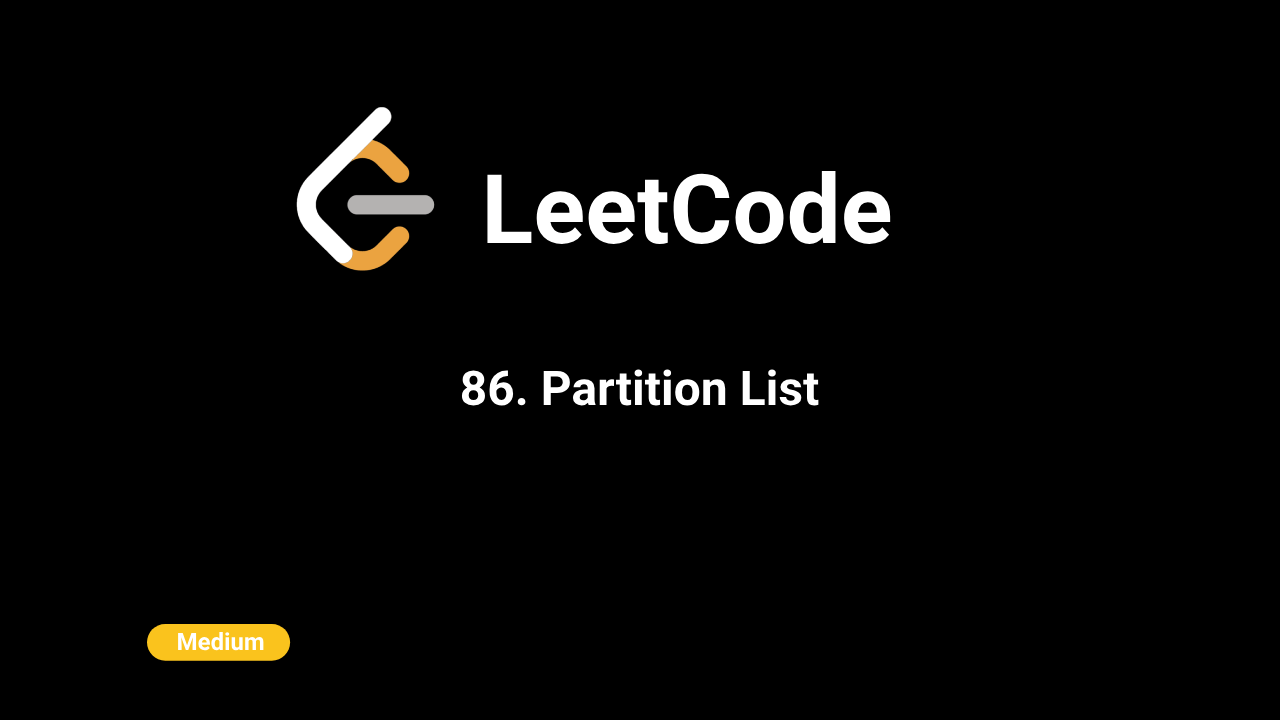🎨Now live: Try our Free AI Image Generation Feature

Intuition
The problem requires partitioning the linked list around a value x such that all nodes with values less than x come before nodes with values greater than or equal to x. Importantly, the relative order of the nodes in each partition must be preserved. This suggests the need for two separate lists: one for nodes less than x and another for nodes greater than or equal to x. By combining these two lists at the end, we can achieve the desired partitioned list.
Approach
- Create Dummy Nodes: Initialize two dummy nodes:
slistfor the "small" partition (nodes less thanx) andblistfor the "big" partition (nodes greater than or equal tox). These dummy nodes help simplify the list operations. - Pointers for Traversal: Use two pointers,
smallandbig, to build the new lists. - Traverse and Partition:
- Traverse the original list node by node.
- If the current node's value is less than
x, add it to thesmalllist. - If the current node's value is greater than or equal tox, add it to thebiglist. - Combine the Lists:
- After traversing the entire list, connect the end of the
smalllist to the beginning of thebiglist. - Set the end of thebiglist toNoneto terminate the combined list. - Return New Head: The head of the partitioned list is the next node of the dummy
slist.
Complexity
Time Complexity:
O(n), where n is the number of nodes in the list. Each node is visited exactly once.
Space Complexity:
O(1). No additional space proportional to the input size is used, only a few extra pointers are maintained.
Code
C++
class Solution {
public:
ListNode* partition(ListNode* head, int x) {
ListNode* slist = new ListNode();
ListNode* blist = new ListNode();
ListNode* small = slist;
ListNode* big = blist;
while (head != nullptr) {
if (head->val < x) {
small->next = head;
small = small->next;
} else {
big->next = head;
big = big->next;
}
head = head->next;
}
small->next = blist->next;
big->next = nullptr;
return slist->next;
}
};Python
# Definition for singly-linked list.
class ListNode:
def __init__(self, val=0, next=None):
self.val = val
self.next = next
class Solution:
def partition(self, head: Optional[ListNode], x: int) -> Optional[ListNode]:
slist = ListNode(0)
blist = ListNode(0)
small = slist
big = blist
while head is not None:
if head.val < x:
small.next = head
small = small.next
else:
big.next = head
big = big.next
head = head.next
small.next = blist.next
big.next = None
return slist.nextJava
class Solution {
public ListNode partition(ListNode head, int x) {
ListNode slist = new ListNode(0);
ListNode blist = new ListNode(0);
ListNode small = slist;
ListNode big = blist;
while (head != null) {
if (head.val < x) {
small.next = head;
small = small.next;
} else {
big.next = head;
big = big.next;
}
head = head.next;
}
small.next = blist.next;
big.next = null;
return slist.next;
}
}JavaScript
var partition = function(head, x) {
let slist = new ListNode();
let blist = new ListNode();
let small = slist;
let big = blist;
while (head !== null) {
if (head.val < x) {
small.next = head;
small = small.next;
} else {
big.next = head;
big = big.next;
}
head = head.next;
}
small.next = blist.next;
big.next = null;
return slist.next;
};